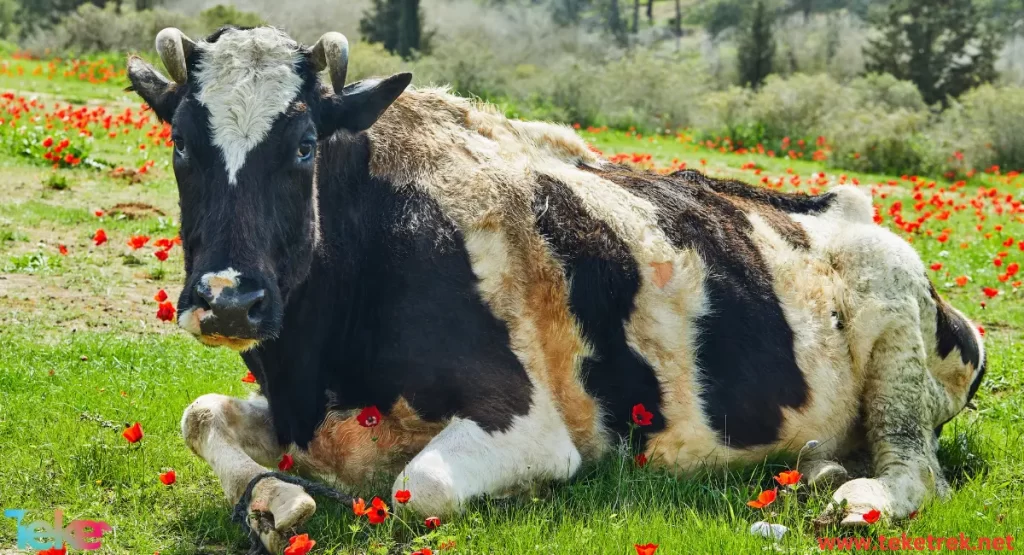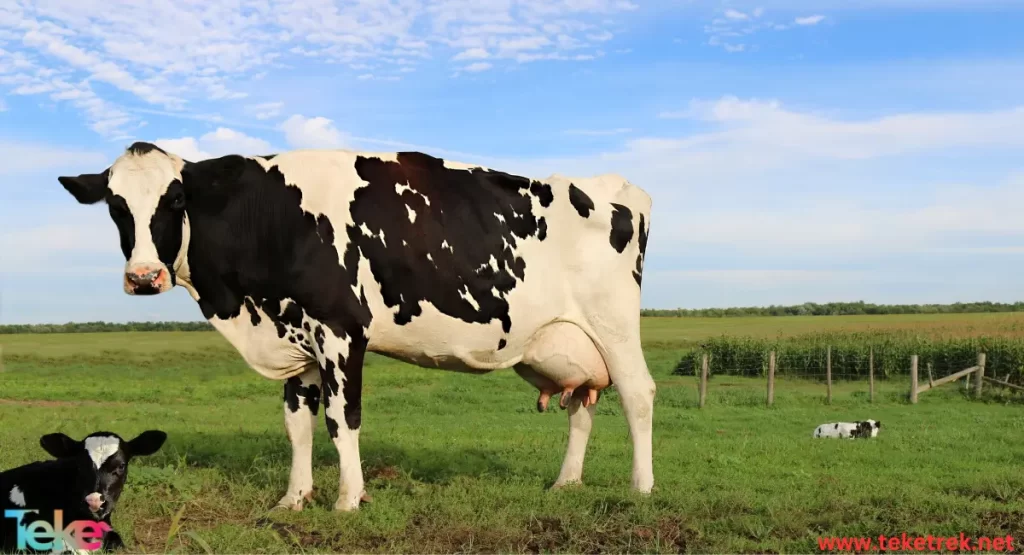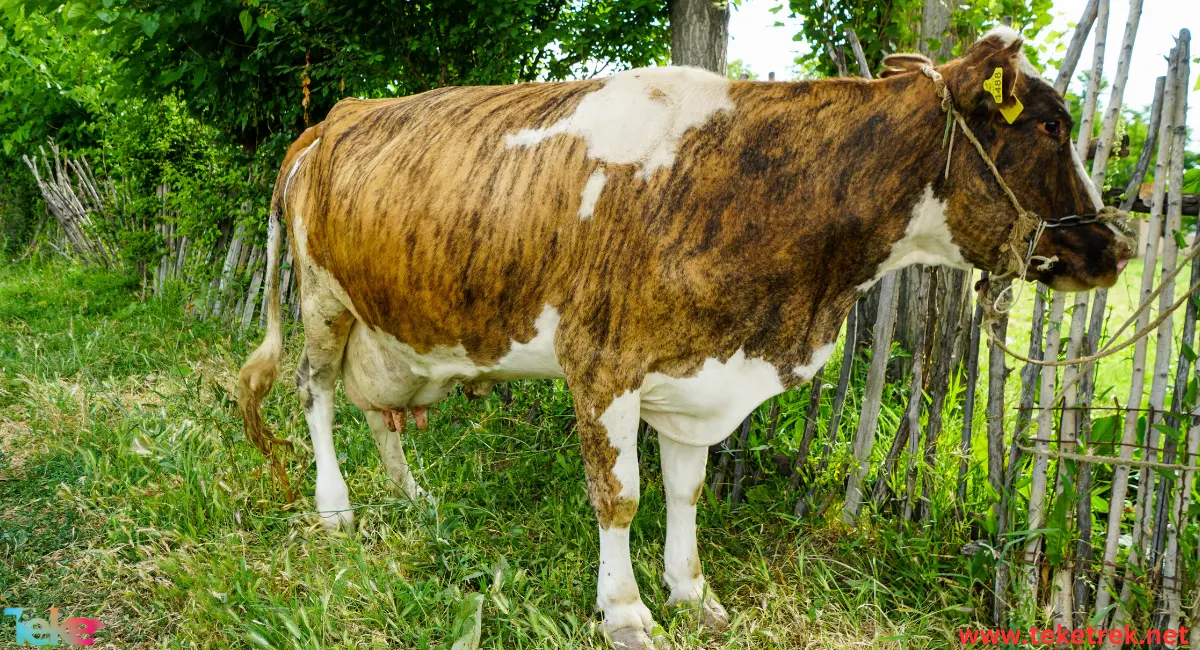Cattle are one of the large mammals species that are considered one of the most important domesticated animals in many cultures and countries around the world, as they are a significant source of milk and meat and are used in agricultural work and for transporting goods. Cattle rearing is considered one of the oldest forms of animal husbandry, and the relationship between humans and cattle has extended for thousands of years. In this article from Teketrek we will talk more about it.
About the Cattle
Cattle are characterized by their friendly and calm nature, and they are social animals that live in groups called “herds.” They feed on grass and require care and attention from farmers to ensure their health and good productivity. Cow’s milk is considered a rich source of proteins and calcium, making it an important food for many people.
The cattle farming industry faces numerous challenges in the modern age, including the environmental and health impacts of this industry on both the environment and humans. Many researchers and farmers are conducting studies and research to improve the conditions of cattle farming and the quality of its products, aiming to achieve a balance between human needs and the preservation of the environment and animal health.

What are the most important types of cattle? And what are their characteristics?
Cows are ruminant mammal that work to regurgitate and digest food after swallowing it. The female is called a cow, while the male is called a bull, and the young are called calves.
Cattle are distinguished by their massive hooves and large horns, and their meat, milk, and hides are also utilized. They are raised worldwide in plains and green pastures and are considered among the less intelligent animals.
The most important types of cattle for meat production
1. Angus cow: Native to Scotland, raised in rainy areas, known for its black color, and excels in calf production.
2. Hereford cow: Originating in England, characterized by its red color and white face, horned, used for both calf production and crossbreeding.
3. Limousin cow: Originally from France, known for its small size and brown color, horned, characterized by dense muscles and lean meat, suitable for crossbreeding.
4. Simmental cow: Characterized by its red and white coloration, horned, of European origin, capable of producing bulls.
The most important types of cattle for milk production
1. Holstein Friesian: One of the most famous dairy cattle breeds, originating in the Netherlands, known for its black and white coloration.
2. Brown Swiss cow: Native to the Swiss Alps, known for its milk high in protein content, making it suitable for cheese production.
3. Jersey cow: Originally from the British island of Jersey, one of the smaller breeds of cattle, known for its large eyes and shades of brown coloration, with milk high in butterfat content.
4. Ayrshire cow: Considered an aristocratic breed, originating in Scotland, characterized by its red and white coloration and adaptability to the surrounding environment.
5. Guernsey cow: Characterized by its golden color and milk close to golden hue due to its beta-carotene content, which is a source of vitamin A.
What are the main benefits of cow’s milk?
Cow’s milk offers many benefits to humans due to its richness in essential minerals. Here are some of the key benefits:
1. Cow’s milk is a rich source of calcium, which contributes to the building and strengthening of bones and teeth.
2. Cow’s milk contains proteins that help in tissue building and repair in the body.
3. Cow’s milk includes essential vitamins such as vitamin D, vitamin B12, and vitamin A, which support overall body health.
4. Cow’s milk contains healthy fats that contribute to providing energy to the body.
5. It contains lactose, a type of natural sugar that provides quick energy to the body.
6. It includes a good proportion of essential minerals such as potassium, magnesium, and zinc, which play a vital role in overall body health.
7. Cow’s milk is considered a good source of fluids, which contributes to hydrating the body and maintaining fluid balance.
8. Cow’s milk is considered a good source of cholesterol, but in moderate amounts, it can have a positive effect on heart health.
9. Cow’s milk is a good source of omega-3 fatty acids, which are essential for brain and heart health.
10. Cow’s milk is easily digestible and suitable for all ages and tastes, making it a popular choice for many people.
What are the main benefits of beef?
The benefits of beef are numerous and significant. We’ll discuss them in detail in this paragraph:
Beef is a rich source of proteins and many essential nutrients that benefit human health, including:
1. Essential amino acids: Beef is a rich source of essential amino acids needed by the body for protein synthesis and tissue maintenance.
2. Support for bone and muscle health: Beef contains significant amounts of proteins and minerals such as iron, zinc, phosphorus, and potassium, which contribute to bone and muscle building and strengthening.
3. Appetite control: Due to its high protein content, consuming beef helps increase satiety and control appetite, which can aid in weight management.
4. Immune system support: Beef contains vitamins like vitamin B12, zinc, and selenium, which enhance immune function and help the body fight diseases.
5. Additionally, beef is considered a good source of iron, which helps prevent anemia, increase energy levels, and improve immune system function.

Briefly, it can be said that cattle play a significant role in human life by providing protein-rich meat and nutrient-rich milk. Cattle farming is a crucial industry worldwide and contributes to meeting food and nutrition needs. Therefore, we should appreciate the role of cattle and ensure their care and sustainable breeding to ensure the continued provision of their benefits to both humans and the environment.





